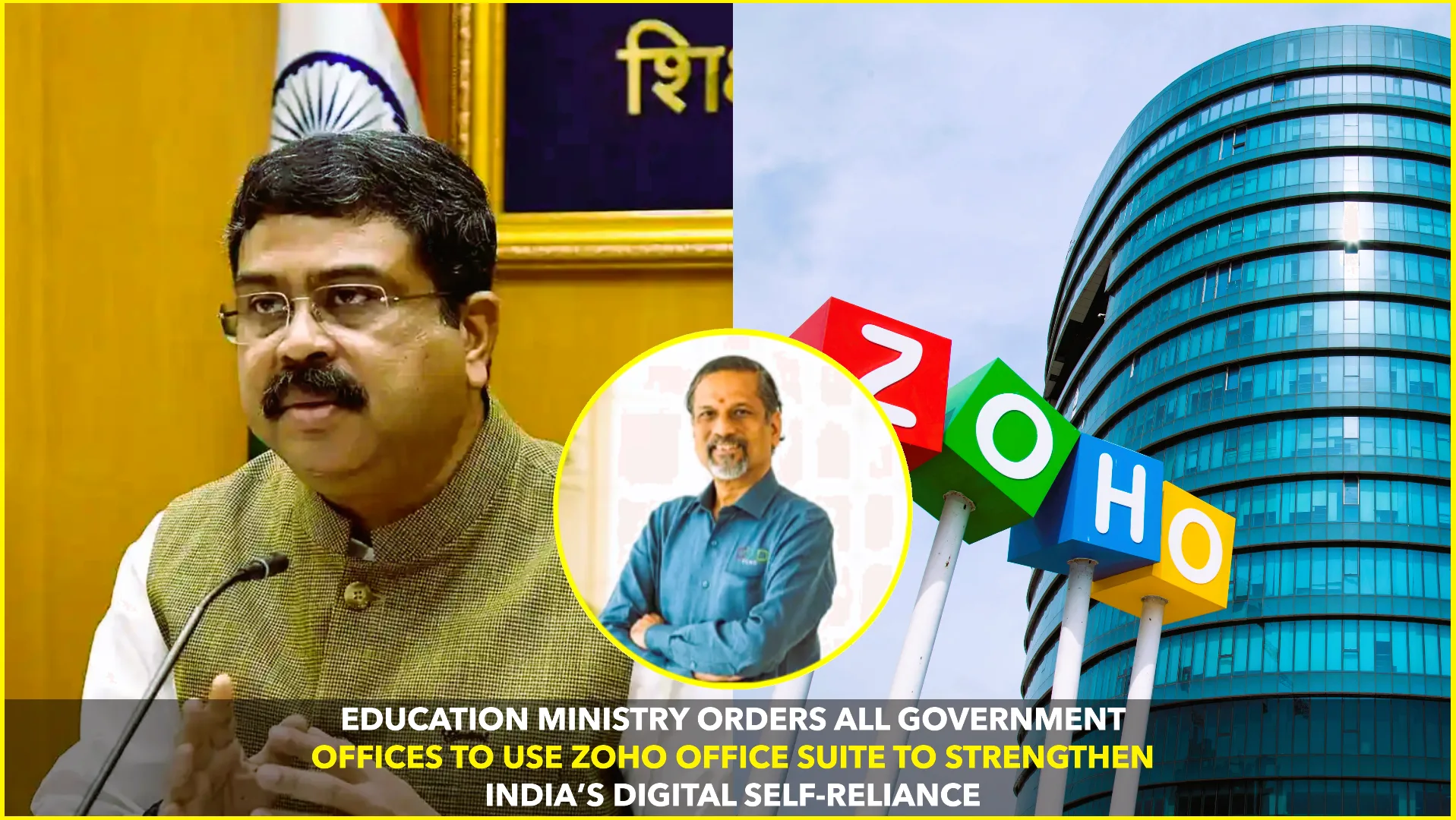In a landmark move that underscores India’s growing commitment to technological self-reliance, the Union Education Ministry has officially instructed all its departments and subordinate offices to adopt Zoho Office Suite for preparing, editing, and sharing official documents.
The directive, issued in early October 2025, is part of the government’s larger “Atmanirbhar Bharat” initiative aimed at reducing dependency on foreign software ecosystems. The ministry has emphasized that this decision is intended to both modernize government workflows and enhance data security through the use of a homegrown digital platform.
Why the Government Chose Zoho
Founded in 1996 and headquartered in Chennai, Zoho Corporation is one of India’s leading SaaS (Software as a Service) providers. The Zoho Office Suite includes tools such as Zoho Writer for documents, Zoho Sheet for spreadsheets, Zoho Show for presentations, and Zoho WorkDrive for cloud storage — all designed to compete directly with foreign platforms like Microsoft 365 and Google Workspace.
According to the ministry’s circular, Zoho was chosen primarily because it offers a secure, Indian-developed platform capable of integrating with government infrastructure managed by the National Informatics Centre (NIC). This ensures that official data remains within Indian jurisdiction and complies with national data protection guidelines (The Economic Times, Oct 2025).
The Digital Self-Reliance Push
This announcement comes amid a broader national campaign to promote “Swadeshi digital tools” across ministries. Earlier this month, Union IT Minister Ashwini Vaishnaw made headlines for personally switching to Zoho’s suite, calling it “a proud example of Indian innovation and reliability” (The Times of India, Oct 2025).
The move is being seen as a symbolic yet strategic step in the government’s journey to make India digitally independent. By adopting Indian-developed platforms, officials say the government can retain control of sensitive data, avoid licensing costs, and create more opportunities for the domestic tech sector.
This policy shift also aligns with global trends where countries are focusing on data sovereignty — ensuring critical information remains protected within their borders.
Implementation Plan and Training
According to officials, the ministry has begun working closely with NIC to ensure seamless adoption of Zoho tools across all departments. NIC will oversee integration with government email systems and handle technical onboarding. Training programs and digital workshops will be rolled out over the next few months to help staff adapt to the new system (Financial Express, Oct 2025).
Employees will gradually migrate their existing data and documents from foreign software ecosystems. The transition will take place in three stages — setup and testing, employee onboarding, and full operational migration.
Challenges and Expert Opinions
While the move has been widely praised, experts caution that user adaptation and interoperability could pose short-term challenges. Many government employees are deeply familiar with global office tools, so training and transition support will be crucial.
Cybersecurity analyst Rohit Sinha notes, “The government’s shift to a homegrown platform is commendable, but success will depend on how quickly departments adapt and whether Zoho can ensure consistent uptime and cross-compatibility with global document formats.”
Meanwhile, Zoho’s CEO and co-founder Sridhar Vembu has welcomed the announcement, calling it “a proud moment for Indian software.” He reiterated Zoho’s commitment to supporting large-scale deployments and maintaining high standards of privacy and compliance (Reuters, Oct 2025).
Economic and Strategic Significance
The decision could have far-reaching economic implications. Government contracts often influence market trends, and a centralized adoption of Indian software could spur more public and private organizations to follow suit.
It’s also a strong signal to global tech players that India intends to build a robust, independent digital ecosystem that rivals international offerings. This could lead to greater competition, improved data localization, and a thriving domestic SaaS market.
Industry observers predict that if the Education Ministry’s pilot succeeds, other ministries may soon adopt Zoho or similar Indian solutions, accelerating the nation’s digital independence.
Conclusion
By embracing Zoho Office Suite, the Education Ministry isn’t just digitizing paperwork — it’s redefining India’s digital sovereignty. The shift highlights a confident, forward-looking strategy where India no longer relies on imported technology to run its government.
This policy is more than a software change — it’s a statement of intent, a clear message that India’s future will be built on its own digital foundations.










